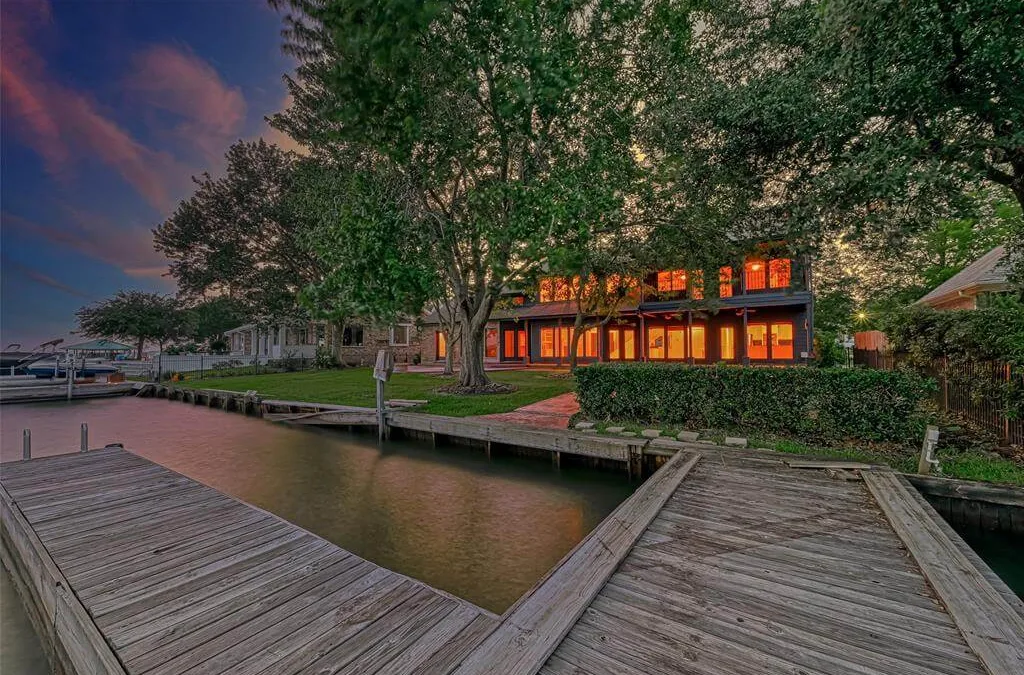Introduction
Houston, a city known for its dynamic urban landscape, is now at the forefront of redefining landscaping trends in residential properties. With homeowners becoming increasingly conscious of the environment, sustainable and eco-friendly designs have gained significant traction. In this article, we will explore some of the most prominent trends shaping the Houston landscaping scene, emphasizing the importance of merging aesthetics with sustainability.
Modern Residential Landscaping Trends
As homeowners in Houston increasingly prioritize environmental sustainability and unique aesthetics, the residential landscaping scene has seen a significant shift. Here are some key trends that are making waves:
Minimalist Landscape Design: Drawing inspiration from minimalist art and architecture, this trend emphasizes the ‘less is more’ philosophy. Landscapes are designed to be decluttered, with carefully selected plants and features that exude simplicity and elegance. This trend isn’t just about aesthetics—it’s also functional. Minimalist landscapes often require less maintenance and water, catering to those who seek beauty without extensive upkeep.
Low-maintenance Landscaping: Houston homeowners, with their busy lifestyles, are opting for landscaping solutions that demand less of their time. Native plants that are accustomed to Houston’s climate dominate these landscapes, as they typically require less water and care. Additionally, synthetic grass, automatic irrigation systems, and perennial plants are gaining popularity, allowing homeowners to enjoy lush greenery without the constant need for mowing, watering, or replanting.
Climate-responsive Garden Layouts: Recognizing the challenges and changes in Houston’s climate, landscapers are focusing on creating gardens that can withstand both intense heat and heavy rain. These gardens often incorporate drought-resistant plants, efficient drainage systems, and shade structures to protect both plants and residents from the sun. This trend not only ensures the garden’s longevity but also promotes water conservation, an essential aspect in today’s eco-conscious world.
Integration of Hardscapes: While greenery remains a central component, modern landscapes are also integrating hardscape elements like stone pathways, water features, and decorative walls. These elements add texture and depth to the garden, creating diverse spaces for relaxation, entertainment, or contemplation. The choice of materials for hardscapes often leans towards natural and locally-sourced options, ensuring the garden remains harmonious with its surroundings.
Dynamic Color Palettes: While neutral and earthy tones remain popular, there’s a growing trend towards incorporating vibrant color palettes into the landscape. From brightly colored flowers to painted walls and decorative elements, these splashes of color add vibrancy and character to the garden. These colors often reflect the local flora, culture, or even the homeowner’s personal style, ensuring each garden tells a unique story.
Incorporating these trends doesn’t just make for a visually appealing garden; it also creates spaces that resonate with the homeowner’s values, particularly the emphasis on sustainability, functionality, and personal expression. As landscaping continues to evolve in Houston, it’s clear that these gardens are becoming reflections of both the individual and the broader community’s aspirations.
Innovative Urban Gardening
Urban environments, with their limited outdoor spaces, pose unique challenges for garden enthusiasts. However, these constraints have birthed some of the most inventive gardening solutions in Houston.
Vertical Gardening: In cities where horizontal space is at a premium, many have looked upwards for a solution. Vertical gardens, whether in the form of green walls or tiered planters, are not only space-saving but also transform stark walls into lush tapestries of greenery. These installations can reduce the heat island effect in urban settings and also improve air quality.
Roof Gardens: The rooftops of urban buildings, previously underutilized, have become the new gardening frontier. These elevated spaces can be transformed into thriving gardens, complete with seating areas and water features. Beyond providing a serene escape, roof gardens offer insulation benefits, reducing energy costs for the building.
Balcony and Container Gardening: For those without a ground-level garden, balconies have become miniature oases. Using pots, boxes, and other containers, residents cultivate everything from herbs to ornamental plants. This trend speaks to the adaptability of urban dwellers, who find ways to connect with nature despite spatial constraints.
Hydroponics and Aquaponics: Soil-less farming methods like hydroponics and aquaponics are growing in popularity among urban gardeners. These systems, which can be set up indoors or on balconies, allow for the cultivation of plants using nutrient-rich water, often in conjunction with fish. They are highly efficient, use less water than traditional gardening, and can yield produce year-round.
Community and Shared Gardens: Recognizing the therapeutic and communal benefits of gardening, many urban residents are coming together to cultivate shared spaces. These community gardens foster a sense of camaraderie, allow for knowledge exchange, and provide fresh produce for local neighborhoods.
The growth of innovative urban gardening in Houston reflects a broader desire among city dwellers to reclaim green spaces and cultivate connections with nature. Through creativity and collaboration, urban residents are proving that the constraints of city living can indeed give rise to verdant, thriving gardens.
Enhancing Outdoor Living Spaces
Outdoor living spaces are no longer just an extension of a home but have become focal points in residential design, particularly in the sprawling landscapes of Houston. The trend isn’t merely about beautifying a backyard; it’s about creating a seamless blend of indoors and outdoors, transforming ordinary spaces into functional and relaxation havens. Here’s how homeowners are doing it:
Multi-functional Designs: Modern outdoor spaces are designed to serve multiple purposes. From dedicated areas for al fresco dining, replete with outdoor kitchens, to cozy fire pits for cooler evenings, there’s an emphasis on utility as much as aesthetics. The rise of modular outdoor furniture allows homeowners to easily reconfigure spaces based on their needs.
Natural Materials: There’s a noticeable shift towards using natural and locally-sourced materials. Be it stone paths, wooden decks, or bamboo screens, integrating such materials ensures that the outdoor living spaces are in harmony with their environment and offer a sense of authenticity.
Water Features: Reflecting pools, fountains, and even compact waterfall structures are making waves in outdoor design. Beyond their visual appeal, these features introduce a calming auditory element and can also help regulate the microclimate, especially during Houston’s warmer months.
Pergolas and Shade Structures: Given Houston’s sunny disposition, pergolas, awnings, and other shade-providing structures have become essential. These not only protect residents from the sun but also define different areas in the outdoor space, from lounging zones to dining nooks.
Integrated Plantings: Instead of isolated plant beds or borders, contemporary designs are integrating plantings within the living spaces. Whether it’s shrubs lining a seating area or climbers adorning a pergola, the greenery is intertwined with functional spaces, making nature a constant companion.
Art and Sculptures: Art isn’t just for indoors. Many homeowners are incorporating sculptures, murals, and other artistic elements into their outdoor spaces. These pieces offer focal points and conversation starters, enhancing the overall ambiance of the area.
The evolution of outdoor living spaces in Houston reflects the growing desire of residents to maximize the potential of every square foot of their property. By combining functionality with aesthetic appeal, these spaces offer a sanctuary right outside one’s doorstep, perfectly blending the comforts of home with the beauty of the outdoors.
Lighting and Technology Integration
The fusion of lighting and technology in modern landscaping is shaping the way homeowners experience and interact with their outdoor environments. Especially in bustling cities like Houston, where residents seek a blend of innovation and serenity, this integration plays a pivotal role in elevating residential exteriors.
Smart Outdoor Lighting: Modern technology has ushered in an era of smart lighting solutions. Homeowners can now control the intensity, color, and timing of their lights using smartphone apps. This allows for creating dynamic landscapes, changing the ambiance according to mood or occasion. Furthermore, these solutions are often paired with eco-friendly landscaping ideas, such as solar-powered lights, aligning with the broader trend of sustainability.
LED Innovations: LED lights have transformed the landscape lighting domain. Not only are they more energy-efficient, but they also offer a wider spectrum of colors and designs. From pathway lights to underwater pool lights, LED technology ensures brightness, longevity, and versatility.
Sensor-Driven Solutions: Motion sensors, light sensors, and even soil moisture sensors are being incorporated into garden layouts. These not only enhance security but also ensure efficient energy usage. For instance, lights that turn on as dusk falls and turn off at dawn, or irrigation systems that water plants when soil moisture levels dip, represent the intersection of convenience and conservation.
Virtual Reality in Landscape Planning: One of the groundbreaking introductions to the landscaping world is the use of virtual reality (VR). Homeowners can now ‘walk through’ their redesigned gardens or patios before any actual work begins. This interactive approach allows for real-time modifications, ensuring the final design aligns perfectly with the homeowner’s vision.
Integration with Home Automation: Outdoor lighting and garden features are now being integrated with broader home automation systems. This means that homeowners can control garden fountains, outdoor heaters, or even music systems along with their indoor devices, all from a unified platform.
Houston’s landscapes are witnessing a renaissance, driven by technological advancements. Lighting and technology integration not only enhances aesthetic appeal but also introduces unparalleled levels of functionality and convenience. As homeowners embrace these innovations, residential exteriors are evolving into intelligent, interactive spaces that cater to both leisure and luxury.
Conclusion
Evolving landscaping trends in residential properties in Houston reflect a broader shift towards sustainability, innovation, and adaptability. By embracing eco-friendly landscaping ideas and integrating modern technologies, Houston homeowners are paving the way for a future where green spaces are not just beautiful retreats but also symbols of responsibility and forward-thinking. As these trends continue to shape the urban landscape, the symbiotic relationship between nature, design, and technology will only deepen, ensuring that the homes of the future are both aesthetically pleasing and eco-conscious.


